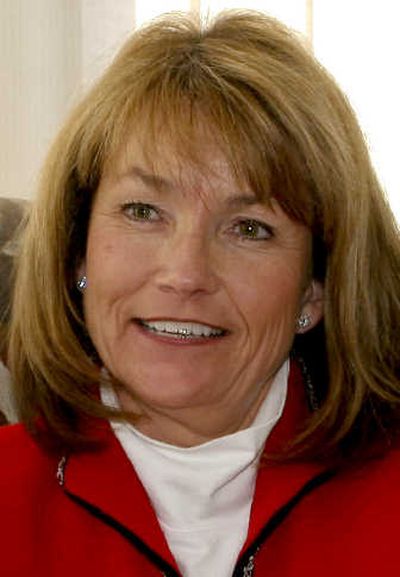Idaho high court could be left without women

BOISE – Depending on the outcome of daylong interviews today, Idaho could become one of just two states with no women on its highest state court.
Idaho Supreme Court Justice Linda Copple Trout, the only woman on the court now, is retiring at the end of the month, and the pool of 12 applicants to replace her includes just four women. When Idaho last filled a Supreme Court position earlier this summer, just two women were among the 19 applicants, and none made the short list passed on to the governor for appointment.
Gov. Butch Otter said then that he was hopeful more women would apply, but he declined to comment Monday on the upcoming appointment. “He is not going to do anything to interfere with the process,” said Otter’s spokesman, Jon Hanian.
Right now, Idaho is among 20 states with just one woman serving on its highest court, according to the National Center for State Courts. Only Indiana has none. Washington has four.
Peg Dougherty, vice president of Idaho Women Lawyers Inc., said her group is concerned about a lack of women and minorities throughout Idaho’s judiciary. Although women make up 24 percent of Idaho’s lawyers, only 1.5 percent of Idaho’s female lawyers are judges. Just six of 42 state district court judges are women, and only 10 of 87 magistrate court judges.
“These numbers should be alarming not only to women lawyers in Idaho but to every Idaho citizen,” Dougherty said.
Nationally, 12.9 percent of female lawyers are members of the judiciary.
Dougherty said, “I don’t think that it’s because women are not applying, because I think the statistics are showing that we do have women who are applying. Based on IWL’s interview prep of the women who have applied, they’re certainly qualified. So I can’t answer the question why they’re not being selected.”
Idaho Women Lawyers is a professional association that’s open to both male and female lawyers and works for diversity. The organization worked with Boise State University to conduct a survey of gender balance in Idaho’s courts and is continuing to gather more statistics.
The group found that in the 3rd Judicial District, which takes in Nampa and Caldwell, four magistrate judge positions have opened up in the past two years, two of them for new positions. A total of 13 women were among 48 applicants, but none was appointed.
Idaho’s six female district judges all serve in the Treasure Valley, in the 3rd and 4th judicial districts.
In North Idaho’s 1st Judicial District, three of 11 magistrate judges are women, but none of the six district judges.
“I think the message is that Idaho is in desperate need of diversity,” Dougherty said.
The state Supreme Court in particular, she said, because of its visibility and authority, “is the perfect decision-making entity to present a more diverse opinion that would hopefully reflect the diversity that exists in Idaho.”
The pool of candidates for Copple Trout’s seat also includes Court of Appeals Judge Sergio Gutierrez, who if appointed, would be the first Hispanic justice to serve on Idaho’s Supreme Court.
Dougherty said, “Idaho Women Lawyers would like to see either a woman or a minority appointed, and we’d like to see the Judicial Council forward to the governor not just one woman and not just one minority, but I think they’ve got several qualified candidates to forward to the governor to choose from.”
The Judicial Council, an appointed, bipartisan council chaired by current Chief Justice Daniel Eismann, will interview all the candidates publicly today at the Idaho Supreme Court, then forward up to four names to Otter for his consideration.
The finalists’ names will be made public Wednesday.